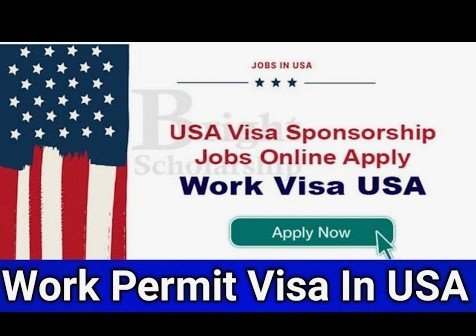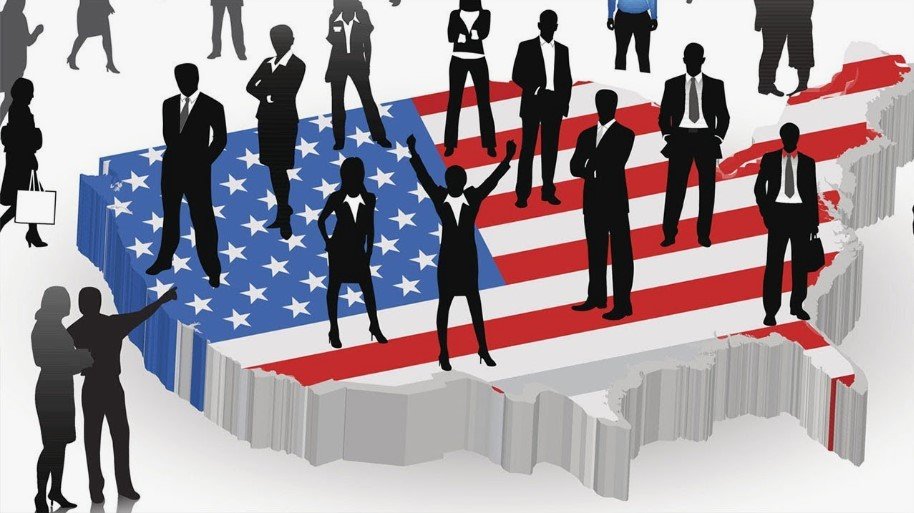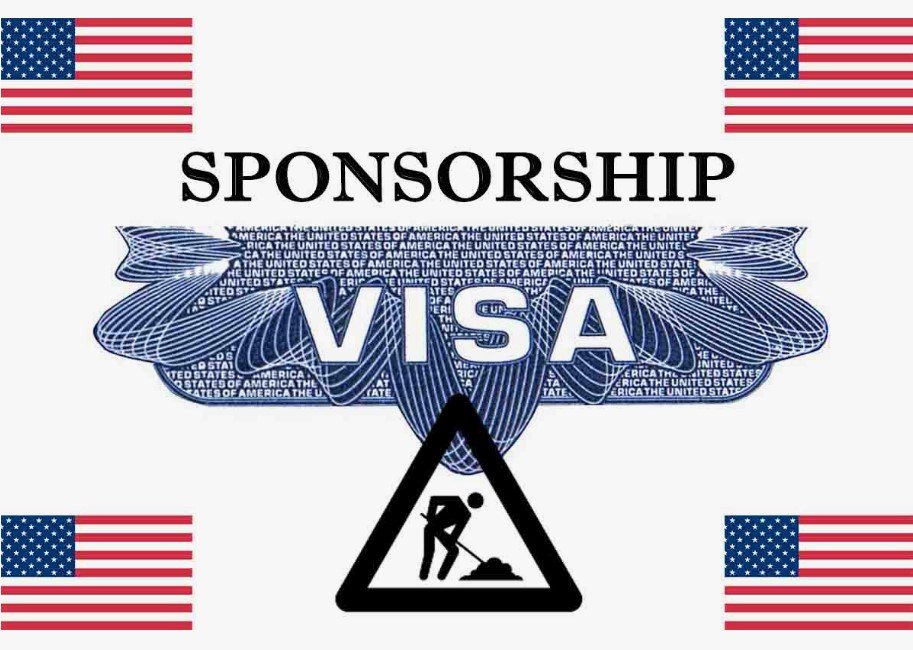How to Find a Job with Visa Sponsorship in the USA:
Finding a job with visa sponsorship in the United States is a goal for many international professionals seeking to advance their careers. The process, while potentially complex, can lead to rewarding opportunities if approached strategically. Below, we’ll outline the steps to help you find a job with visa sponsorship, from understanding visa types to leveraging networks and optimizing your application strategy.

Visa Sponsorship in USA
- Understand Visa Sponsorship Types
The first step in finding a sponsored job is to understand the types of visas available for employment in the United States. Here are some of the most common work visas for international professionals:
H-1B Visa: This visa is for specialized workers, particularly in fields like IT, engineering, finance, and health care. It’s typically the most sought-after visa and allows holders to work in the U.S. for up to six years. Sponsorship requires that the employer file a petition on behalf of the employee.
L-1 Visa: For intra-company transfers, this visa allows multinational companies to transfer employees from foreign offices to US-based ones. It’s suitable if you’re already working for a company with offices in the U.S.
O-1 Visa: Granted to individuals with extraordinary ability or achievement in their field, including the arts, sciences, education, and athletics.
E-2 Visa: Available to investors and entrepreneurs, this visa is suitable if you’re looking to start or invest in a U.S. business.
Knowing which visa category aligns with your qualifications and goals will help you target the right companies and streamline your application process.
- Research Companies That Offer Sponsorship
Not all U.S. companies are willing to sponsor visas, so it’s essential to focus on those that do. Certain companies have a history of hiring international employees, making them ideal targets. You can research sponsoring companies in several ways:
Use Online Databases: Websites like MyVisaJobs and H1BGrader offer searchable databases where you can find information on companies that sponsor H-1B visas. You can filter based on industry, job title, and location.
Research Top Employers for International Talent: Many technology companies, consulting firms, and financial institutions have established processes for sponsoring visas. Top U.S. companies that regularly sponsor H-1B visas include Amazon, Microsoft, Google, and IBM.
LinkedIn and Glassdoor: Look for companies with a history of hiring international employees. Both platforms have options to search for job postings specifically mentioning visa sponsorship.
- Optimize Your Resume and Application Materials
When applying for jobs with visa sponsorship, your resume and cover letter should emphasize both your expertise and why you’re a valuable addition to a U.S.-based team. Here’s how to tailor your application:
Highlight Specialized Skills: U.S. employers are more likely to sponsor candidates with skills that are in high demand but hard to find locally. Emphasize your specialized skills in areas like data science, software engineering, project management, and STEM fields.
Demonstrate Global Experience: If you have experience working in different countries or with diverse teams, highlight this in your application. U.S. companies value candidates who can bring an international perspective.
Address Visa Sponsorship in Your Cover Letter: A cover letter can help clarify your interest in working in the U.S. and explain your sponsorship needs tactfully. Emphasize that you’re committed to bringing long-term value to the company.
- Network Strategically
Networking can significantly increase your chances of landing a job with visa sponsorship. Here’s how to build meaningful connections:
Attend Industry Conferences and Job Fairs: Some industry events cater to international job seekers. These can help you meet potential employers and learn about companies open to hiring internationally.
Use LinkedIn: Connect with employees and recruiters from companies that sponsor visas. Join industry-specific groups or alumni associations where you can ask questions and learn about job openings.
Informational Interviews: Reach out to people working in your desired industry or company for informational interviews. While this doesn’t guarantee a job offer, it can help you gain insights and possibly receive referrals when positions open up.
- Leverage University Resources (For Students and Recent Graduates)
If you are studying in the U.S. on an F-1 student visa, you may have access to Optional Practical Training (OPT) or Curriculum Practical Training (CPT). These programs allow you to work in your field temporarily after graduation or during your studies.
Apply for OPT or CPT: These programs are temporary work permits for F-1 students, allowing them to work for 12 months (or 36 months for STEM graduates) without needing a separate sponsorship. Many U.S. employers may then be open to sponsoring an H-1B visa if they see long-term potential.
Utilize Career Services: Most U.S. universities have career centers dedicated to helping international students find employment. Take advantage of resume workshops, job fairs, and networking events organized by your university.
- Prepare for the H-1B Lottery (For H-1B Visa Applicants)
The H-1B visa has an annual cap, so once your employer sponsors you, the application goes into a lottery system if demand exceeds supply. Here are some tips to improve your chances:
Apply Early: Employers can file H-1B petitions on April 1 for the fiscal year starting October 1. Starting early increases your chances of being selected.
Consider Alternative Paths: If you aren’t selected in the H-1B lottery, discuss options with your employer, like the O-1 or L-1 visa, or explore countries with alternative visa programs while reapplying the next year.
- Be Persistent and Stay Informed
Securing a sponsored job in the U.S. requires persistence, especially due to limited visa quotas and high demand. Stay updated on visa policies, as regulations and visa eligibility criteria can change. If you’re not selected or if sponsorship falls through, don’t be discouraged. Consider applying to other companies or gaining additional skills that may enhance your application.
Visa Sponsorship Jobs in the USA 2024:
Visa sponsorship jobs in the United States are an excellent opportunity for foreign professionals seeking to build a career in one of the world’s largest economies. As of 2024, numerous sectors, from technology and healthcare to engineering and finance, actively recruit skilled workers globally and offer visa sponsorship to eligible candidates. This article provides an overview of visa sponsorship jobs, popular industries, and the processes involved.
Key Industries Offering Visa Sponsorship in 2024
Some industries are especially well-suited to hiring international talent and frequently offer visa sponsorship:
Technology: Tech giants like Google, Microsoft, and Amazon continuously seek experts in software development, data science, and AI.
Healthcare: With an aging population, the USA has a high demand for healthcare professionals, including doctors, nurses, and medical researchers.
Engineering: Many engineering fields, especially mechanical, civil, and chemical engineering, require skilled professionals, creating sponsorship opportunities.
Finance and Accounting: Financial institutions also look for international talent with expertise in analytics, finance, and accounting.
Common Visa Types for Sponsored Jobs
The most common visa types for those seeking employment in the U.S. are:
H-1B Visa: For skilled workers in specialized fields. Applicants need at least a bachelor’s degree and a job offer from a U.S. employer.
L-1 Visa: For multinational companies to transfer employees to U.S. offices.
O-1 Visa: For individuals with extraordinary skills in their field.
Applying for Visa Sponsorship Jobs
Securing a visa sponsorship job involves:
Researching Employers: Target companies with a history of sponsoring visas. Websites like Glassdoor and LinkedIn can help find these employers.
Building a Strong Application: Highlight relevant skills and experience. Emphasizing your unique contributions can make you stand out.
Networking: Leveraging professional networks, especially with those working in U.S. companies, can increase visibility.
Visa Sponsorship Jobs in the USA for Foreigners:

For many foreigners, securing a job in the United States through visa sponsorship is a promising path toward living and working in the country. Visa sponsorship jobs involve U.S. employers who are willing to sponsor a qualified foreign worker by handling the necessary paperwork for a visa. This allows the foreigner to work legally in the U.S., often temporarily, with options for permanent residency over time.
Types of Visa Sponsorship Jobs
Two common visa types for employment sponsorship are the H-1B and L-1 visas. The H-1B visa is often used for specialized roles that require a bachelor’s degree or higher, particularly in fields like technology, engineering, and healthcare. On the other hand, the L-1 visa caters to employees within multinational companies who are transferring from an international branch to the U.S.
In-Demand Sectors and Employers
The US job market actively recruits foreign workers in technology, healthcare, education, finance, and engineering. Companies like Amazon, Google, Microsoft, and healthcare institutions frequently sponsor foreign employees for these roles. Visa sponsorship opportunities also exist in academia and research through programs that support global collaboration.
Requirements for Sponsorship
To qualify for visa sponsorship, foreign workers usually need specialized skills or education, such as a degree in STEM fields. Employers must demonstrate that the job cannot be filled by a qualified U.S. worker, and they take on legal responsibilities for the application.
Free Visa Sponsorship Jobs in the USA:
As the demand for skilled labor in the U.S. continues to rise, many employers are offering free visa sponsorship to attract international talent. These sponsorships typically cover work visas like H-1B, L-1, and O-1, allowing foreign professionals to legally work in the U.S. Popular sectors offering visa sponsorship include tech, healthcare, finance, and engineering. Companies like Amazon, Google, Microsoft, and Deloitte frequently sponsor skilled international workers, especially in roles that require specific expertise. Positions such as software engineers, nurses, data scientists, and management consultants are in high demand.
Unskilled Jobs with Visa Sponsorship in the USA:
In recent years, the demand for unskilled or entry-level labor in the United States has opened doors for foreign nationals seeking employment through visa sponsorship. Unskilled jobs typically require minimal formal education and are primarily focused on fields like agriculture, hospitality, construction, caregiving, and manufacturing. With an increasing labor shortage in these sectors, many U.S. employers have turned to international workers to fill these roles, offering visa sponsorships to address workforce gaps.
Types of Visas for Unskilled Jobs
For unskilled job roles, the most common visa options include the H-2A and H-2B visas. The H-2A visa is designed specifically for temporary agricultural jobs, and it allows U.S. employers to hire foreign nationals for seasonal agricultural work. The H-2B visa, on the other hand, is available for non-agricultural seasonal or temporary jobs in fields like hospitality, construction, and landscaping. These visas offer a pathway for foreign workers to enter the U.S. for short-term employment, and, in some cases, they can be renewed based on employer need and performance.
Benefits and Challenges
Visa-sponsored unskilled jobs offer numerous benefits, including the opportunity to gain international work experience and potentially pave the way for future employment opportunities in the U.S. However, these roles often come with challenges, such as the seasonal nature of employment and rigorous labor conditions. Additionally, visa sponsorship for unskilled roles is competitive, and applicants must meet specific criteria set by employers and U.S. immigration regulations. WEBSITE VISIT
